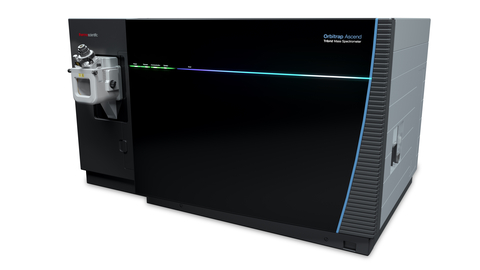MAASTRICHT, Netherlands– IMSC 2022 – Thermo Fisher Scientific Inc., the world leader in serving science, is showcasing a new mass spectrometry instrument and consumables that enable biopharmaceutical and proteomics customers to drive scientific breakthroughs and solve analytical challenges. The company will showcase these innovations during the International Mass Spectrometry Conference (IMSC), August 27-September 2, 2022, Booth 6, in the Maastricht Exhibition & Congress Centre (MECC), Maastricht, Netherlands.
Thermo Fisher announces the new Thermo Scientific Orbitrap Ascend Tribrid mass spectrometer, offering new capabilities for multiplexed proteomics and native protein characterization. The mass spectrometer enables improved sample throughput, versatility, and ease-of-use—producing high quality data with simplicity. More samples can be analyzed at lower concentrations, enabling faster, more sensitive analysis, and macromolecule experiments, that were not possible before, can now be achieved. The new Auto-Ready ion source for calibration maximizes convenience, allowing the user to spend more time on the results, and less time on instrument set-up.
“Building upon the proven Tribrid architecture, our new mass spectrometer was designed for customers to address the most difficult analytical challenges,” said Rosy Lee, vice president and general manager, life sciences mass spectrometry, Thermo Fisher Scientific. “The instrument provides a single, versatile platform with single-cell sensitivity for proteomics and metabolomics, producing high-quality data with ease. This enables customers to tackle challenging analytes required to scale up their science.”
Joshua Coon, PhD Principal Investigator, Coon Laboratories, University of Wisconsin-Madison, said, “One feature on the Orbitrap Ascend Tribrid MS that is very exciting is its ability to route multiple ions. By moving the collision cell forward, the speed of the system is increased, allowing us to dig deeper into a sample and detect more, quicker.”






